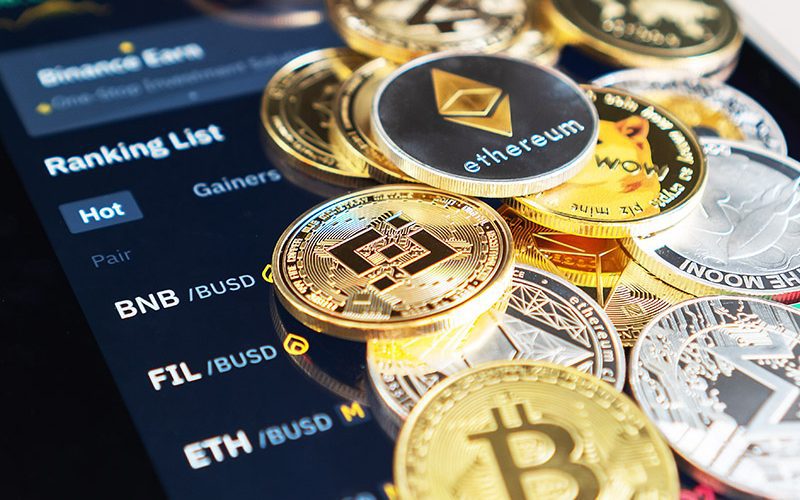The rise of Bitcoin in 2009 marked the inception of cryptocurrency, a digital currency built on blockchain technology. Since then, Bitcoin has garnered immense attention, becoming a household name and a symbol of the potential of decentralized finance. However, Bitcoin is just the tip of the iceberg in the vast world of cryptocurrencies. In recent years, a plethora of alternative cryptocurrencies, known as altcoins, have emerged, each with unique features and functionalities. This article delves into the realm of altcoins and explores various blockchain projects, highlighting their significance and potential impact on the future of finance and technology.
Altcoins: Beyond Bitcoin

While Bitcoin remains the dominant force in the cryptocurrency market, altcoins have gained traction as alternative investment opportunities and platforms for innovation. Altcoins encompass a diverse range of digital currencies, each offering distinct advantages and use cases. Ethereum, for instance, introduced smart contracts, enabling developers to create decentralized applications (DApps) and launch new tokens on its blockchain. Ripple focuses on facilitating fast and low-cost international payments, targeting financial institutions and cross-border transactions. Litecoin boasts faster transaction times and lower fees compared to Bitcoin, positioning itself as a more efficient payment solution.
Blockchain Projects: Driving Innovation
Beyond cryptocurrencies, blockchain technology underpins a myriad of projects and initiatives across various industries. These projects harness the immutable and transparent nature of blockchain to revolutionize processes and solve real-world problems. One notable example is Chainlink, a decentralized oracle network that connects smart contracts with real-world data. By enabling smart contracts to interact with external data sources, Chainlink enhances the functionality and utility of decentralized applications, paving the way for the widespread adoption of blockchain technology.
Challenges and Opportunities
Despite the promising potential of altcoins and blockchain projects, the industry faces several challenges that must be addressed to realize widespread adoption and scalability. One such challenge is regulatory uncertainty, with governments worldwide grappling to establish clear guidelines for the use and trading of cryptocurrencies. Regulatory clarity is crucial to fostering investor confidence and ensuring the legitimacy of blockchain projects. Additionally, scalability remains a pressing issue, especially as blockchain networks experience congestion and high transaction fees during periods of peak activity. Scalability solutions such as layer 2 protocols and sharding are being explored to enhance the efficiency and throughput of blockchain networks, but further development is needed to achieve mass scalability.
The Road Ahead: Innovation and Evolution
Looking ahead, the landscape of altcoins and blockchain projects is poised for continued innovation and evolution. New technologies such as decentralized finance (DeFi), non-fungible tokens (NFTs), and decentralized autonomous organizations (DAOs) are reshaping the way we interact with digital assets and participate in the global economy. Moreover, advancements in consensus mechanisms, interoperability, and privacy features are driving the next wave of blockchain innovation, unlocking new use cases and opportunities. As the industry matures and matures, collaboration between projects and communities will be crucial in driving interoperability, scalability, and sustainability across the cryptocurrency and blockchain ecosystem. With ongoing research, development, and adoption, the future of altcoins and blockchain projects holds immense promise, ushering in a new era of decentralized finance and digital innovation.
Another promising blockchain project is Polkadot, which aims to enable interoperability between different blockchains. Polkadot’s unique architecture allows independent blockchains to exchange information and transactions, fostering a more connected and scalable blockchain ecosystem. This interoperability holds the potential to address scalability issues and unlock new possibilities for decentralized finance, gaming, and identity management.
Analysis Table: A Comparative Overview
| Cryptocurrency/Blockchain Project | Features | Use Cases | Market Cap (as of June 2024) |
|---|---|---|---|
| Ethereum | Smart contracts, DApps | Decentralized finance, tokenization | $XXX billion |
| Ripple | Fast, low-cost international payments | Cross-border transactions, remittances | $XXX billion |
| Litecoin | Faster transaction times, lower fees | Payment solutions, micropayments | $XXX billion |
| Chainlink | Decentralized oracle network | Secure data feeds for smart contracts | $XXX billion |
| Polkadot | Interoperability between blockchains | Scalable blockchain ecosystem | $XXX billion |
Conclusion
As the cryptocurrency and blockchain industry continues to evolve, the significance of altcoins and blockchain projects cannot be overstated. While Bitcoin laid the foundation for decentralized finance, altcoins like Ethereum, Ripple, and Litecoin have expanded the possibilities of blockchain technology, offering solutions for various use cases. Moreover, blockchain projects such as Chainlink and Polkadot are driving innovation by addressing critical challenges and paving the way for a more interconnected and efficient digital economy. As investors and developers explore the potential of these alternative cryptocurrencies and blockchain projects, the future of finance and technology holds exciting prospects, shaped by continuous innovation and disruption.











